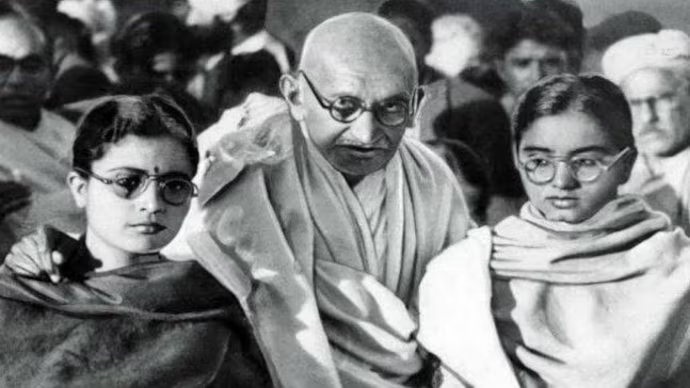Women in Gandhi’s Life: Unsung Heroines of India’s Freedom Struggle
Mahatma Gandhi, the iconic leader of India’s independence movement, is often portrayed as a singular force in the fight against British colonial rule. However, the role of women in shaping both Gandhi’s personal philosophy and the broader independence movement is frequently overlooked. This article explores the significant contributions of women in Gandhi’s life and their impact on India’s journey to freedom.
Kasturba Gandhi: The Silent Pillar
No discussion of women in Gandhi’s life can begin without mentioning Kasturba Gandhi, his wife and lifelong companion. Married at the young age of 13, Kasturba evolved from a traditional Hindu wife to a formidable activist in her own right. She stood shoulder to shoulder with Gandhi during his campaigns in South Africa and India, often taking charge when he was imprisoned.
Kasturba’s influence on Gandhi was profound. Her unwavering commitment to their shared cause and her quiet strength in the face of hardship were a constant source of inspiration for Gandhi. She played a crucial role in the Salt Satyagraha and the Quit India Movement, leading protests and enduring multiple imprisonments. Kasturba’s dedication to social causes, particularly in the areas of education and women’s rights, complemented Gandhi’s broader political agenda.
Sarojini Naidu: The Nightingale of India
Sarojini Naidu, a poet, orator, and political activist, was one of Gandhi’s closest associates. Known as the “Nightingale of India” for her lyrical prowess, Naidu brought eloquence and passion to the independence movement. She was instrumental in bridging the gap between Gandhi and the more radical elements within the Indian National Congress.
Naidu’s contribution extended beyond her oratory skills. She actively participated in the Salt March of 1930 and was arrested for her role in the Civil Disobedience Movement. As the first Indian woman to become the President of the Indian National Congress and later the first woman to become a governor of an Indian state, Naidu broke significant gender barriers, inspiring countless women to join the freedom struggle.
Vijaya Lakshmi Pandit: The Diplomatic Force
Sister of Jawaharlal Nehru, Vijaya Lakshmi Pandit was a dynamic force in India’s fight for independence. While not as closely associated with Gandhi as some others, she played a crucial role in internationalizing India’s struggle. Pandit’s diplomatic skills were instrumental in garnering global support for India’s cause.
Her involvement in the freedom movement led to multiple imprisonments, but it did not deter her resolve. Post-independence, Pandit continued to break barriers, becoming the first woman to hold a cabinet position in India and later serving as the first woman president of the United Nations General Assembly.
Madeleine Slade (Mirabehn): The Devoted Disciple
Madeleine Slade, later known as Mirabehn, was a British woman who became one of Gandhi’s most devoted followers. Inspired by Gandhi’s philosophy, she left her life of privilege in England to join him in India. Mirabehn played a significant role in promoting Gandhi’s ideas of non-violence and self-sufficiency in the West.
Her contributions to the independence movement were multifaceted. She worked tirelessly to improve the conditions in Indian villages, focusing on sanitation, education, and spinning – key components of Gandhi’s vision for a self-reliant India. Mirabehn’s presence in Gandhi’s inner circle also helped bridge cultural gaps and brought international attention to India’s struggle.
The Women of Bardoli: Grassroots Revolution
While individual women close to Gandhi played crucial roles, it’s equally important to recognize the collective power of women at the grassroots level. The Bardoli Satyagraha of 1928 is a prime example. Women in this small Gujarat district played a pivotal role in the success of the non-violent protest against unfair tax increases.
These women, many of whom were illiterate and had never stepped out of their homes for public causes, organized rallies, picketed liquor shops, and resisted police brutality. Their participation marked a significant shift in the independence movement, bringing rural women into the fold of active resistance.
Legacy and Impact
The involvement of women in Gandhi’s movement had far-reaching consequences. It not only contributed to the success of the independence struggle but also paved the way for women’s emancipation in India. Gandhi’s insistence on women’s participation in public life challenged traditional gender roles and empowered women to claim their place in the political sphere.
These women, through their courage, sacrifice, and leadership, dispelled the notion that the freedom struggle was solely a male domain. They set precedents for future generations of Indian women in politics, social reform, and public service.
Conclusion
The story of India’s independence is incomplete without acknowledging the vital role played by women. From Kasturba Gandhi’s quiet resilience to Sarojini Naidu’s fiery orations, from Vijaya Lakshmi Pandit’s diplomatic finesse to Mirabehn’s devoted service, and the countless unnamed women who participated in protests and civil disobedience – women were integral to shaping Gandhi’s vision and realizing India’s dream of freedom.
As we reflect on India’s journey to independence, it’s crucial to bring these often-overlooked narratives to the forefront. The women in Gandhi’s life were not just supporters but active architects of a new India. Their legacy continues to inspire and guide generations of women leaders in India and around the world.



